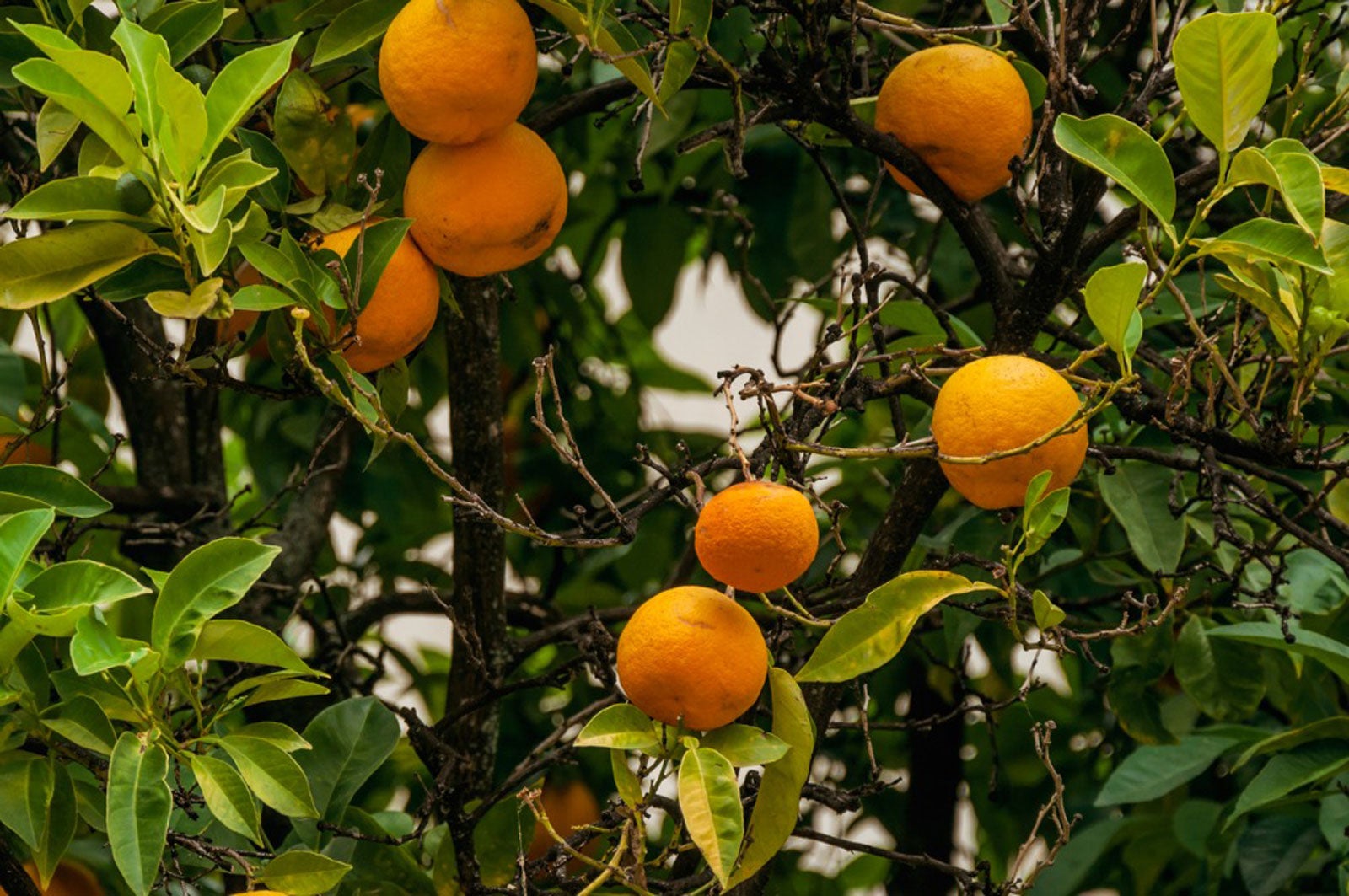
Oh no, my orange tree leaves are turning yellow! If you are mentally screaming this as you watch your orange tree's health ebb, fear not, there are a multitude of reasons why orange tree leaves turn yellow, and many of them are treatable. Read on to learn about them.
Why are My Orange Tree Leaves Turning Yellow?
Cultural practices, environmental conditions, disease, and pests may all be at the root of yellowing leaves on orange trees.
Disease
Yellowing leaves on orange trees are often the result of a disease, most often a fungal disease such as Phytophthora gummosis (foot rot), Phytophthora root rot (caused by the same fungus as gummosis), and Armillaria root rot (oak root fungus).
- Phytophthora gummosis - Phytophthora gummosis presents itself as an orange tree with yellow leaves that drop with gummy, inner bark; dry, cracked bark with sap-oozing lesions; and eventual spread to the crown and roots. Keep the trunk dry (don't let the sprinkler hit it), scrape away diseased bark, and keep mounded soil away from the trunk. Also, remove any branches that touch the ground and avoid injuring the tree with weed whackers or the like which will create an easy entry wound for the fungus to enter.
- Phytophthora root rot - Brought to you by the same fungus as above, Phytophthora root rot can survive in the soil for a long time and is spread when the trunk base stays wet and infiltrates the root system with symptomatic yellowing of the leaves. If the damage is minimal, cut irrigation to allow the trunk to dry. If the damage is severe, remove the tree and fumigate before replanting.
- Armillaria root rot - Armillaria root rot thrives in cool, moist soil and causes diminished growth, shoot dieback, and small and yellowed leaves that drop prematurely. Once these symptoms appear, it is likely the disease has spread to the roots of neighboring trees and, unfortunately, it will be very difficult to save them. Remove and burn infected trees and those surrounding the infected and fumigate the site before replanting.
Pests
Several pests may be the culprit in orange trees with yellow leaves.
- Scale - California red scale preys on many types of citrus and is a true horror for commercial growers. Natural predators, like parasitic wasps, are used to control this citrus scale.
- Mites - The citrus mite leaves bright red egg globs on the bark and leaves while stippling the leaves and green fruit yellow. Use oil spray between August and September to control these plant mites or you can try washing with soapy water every week.
- Nematodes - Microscopic nematodes feed on citrus roots and are often combined with Phytophthora root rot. The best offense is the best defense; buy only resistant rootstock.
Nutrient Deficiency
Yellowing leaves in oranges may also be caused by iron deficiency resulting from a high soil pH, high phosphorus, or low iron levels. This generally occurs in the spring when soil temps are cold and makes the leaves turn pale green to yellow. Apply foliar nitrogen, such as urea, to increase set and yield.
Environmental/Cultural
Prevention is the key to avoiding yellowing leaves on orange trees. Gardening practices such as proper irrigation will reduce the spread of diseases, along with the application of fungicide or pesticide and fertilization to buoy the tree's defenses. Unseasonable weather changes may also result in yellowing and leaf drop, so protect the tree by covering it or, if it is a container plant, move into a protected area. Additionally, remove any fallen fruit or that which is rotting on the limb to prevent attracting fungal or bacterial diseases. Prune out defoliated branches in the spring after the tree has completely leafed out.
Sign up for the Gardening Know How newsletter today and receive a free copy of our e-book "How to Grow Delicious Tomatoes".

Amy Grant has been gardening for 30 years and writing for 15. A professional chef and caterer, Amy's area of expertise is culinary gardening.
